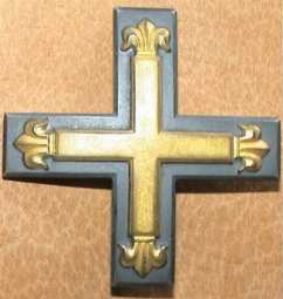Baltenkreuz on:
[Wikipedia]
[Google]
[Amazon]
 The Baltic Cross (
The Baltic Cross (
 The Baltic Cross (
The Baltic Cross (German
German(s) may refer to:
* Germany, the country of the Germans and German things
**Germania (Roman era)
* Germans, citizens of Germany, people of German ancestry, or native speakers of the German language
** For citizenship in Germany, see also Ge ...
: Das ''Baltenkreuz'') was a military decoration of the German Weimar Republic
The Weimar Republic, officially known as the German Reich, was the German Reich, German state from 1918 to 1933, during which it was a constitutional republic for the first time in history; hence it is also referred to, and unofficially proclai ...
. It was created in 1919 by the Baltic National Committee (''Baltischer Nationalausschuss''), the political representation of German-Baltic population of southern Livonia
Livonia, known in earlier records as Livland, is a historical region on the eastern shores of the Baltic Sea. It is named after the Livonians, who lived on the shores of present-day Latvia.
By the end of the 13th century, the name was extende ...
and Courland
Courland is one of the Historical Latvian Lands in western Latvia. Courland's largest city is Liepāja, which is the third largest city in Latvia. The regions of Semigallia and Selonia are sometimes considered as part of Courland as they were ...
(roughly equivalent to parts of modern Latvia
Latvia, officially the Republic of Latvia, is a country in the Baltic region of Northern Europe. It is one of the three Baltic states, along with Estonia to the north and Lithuania to the south. It borders Russia to the east and Belarus to t ...
).
The Cross was awarded to officers, NCOs and men of the Baltic Landeswehr and voluntary groups who had fought in the Baltic states during 1918–19 for at least three months against the Bolshevik
The Bolsheviks, led by Vladimir Lenin, were a radical Faction (political), faction of the Marxist Russian Social Democratic Labour Party (RSDLP) which split with the Mensheviks at the 2nd Congress of the Russian Social Democratic Labour Party, ...
armies. Ceremonies are known from July 1919. The Baltic National Committee in Jelgava
Jelgava () is a state city in central Latvia. It is located about southwest of Riga. It is the largest town in the Semigallia region of Latvia. Jelgava was the capital of the united Duchy of Courland and Semigallia (1578–1795) and was the ad ...
, in Courland (now in Latvia) issued numbered warrants for the award. A total of 21,839 Baltic Crosses were awarded. The Cross was accepted as a state-approved decoration of the German Reich
German ''Reich'' (, from ) was the constitutional name for the German nation state that existed from 1871 to 1945. The ''Reich'' became understood as deriving its authority and sovereignty entirely from a continuing unitary German ''Volk'' ("na ...
on 16 May 1933 and was allowed to be worn. State approval was continued by the Federal Republic of Germany
Germany, officially the Federal Republic of Germany, is a country in Central Europe. It lies between the Baltic Sea and the North Sea to the north and the Alps to the south. Its sixteen constituent states have a total population of over 84 ...
.
The Baltic Cross is a black oxidised metal cross superimposed with a gilt cross of the coat of arms of the Grand Master of the Teutonic Knights
The Teutonic Order is a Catholic religious institution founded as a military society in Acre, Kingdom of Jerusalem. The Order of Brothers of the German House of Saint Mary in Jerusalem was formed to aid Christians on their pilgrimages to t ...
, ending in fleurs de lys
The ''fleur-de-lis'', also spelled ''fleur-de-lys'' (plural ''fleurs-de-lis'' or ''fleurs-de-lys''), is a common heraldic charge in the (stylized) shape of a lily (in French, and mean and respectively). Most notably, the ''fleur-de-lis'' ...
; the reverse is plain. The ribbon is in the blue and white colours of the Baltic Landeswehr. The design was established by members of the Baltic National Committee. The Cross could be worn as a breast pin fixed on the left side of the tunic chest or from the medal ribbon. Occasionally, ribbon and plug cross were worn simultaneously. Crosses with ribbon, ring and eyelet are irregular and only intended for large orders buckle. The alternate methods of wear have given rise to descriptions that the award had two classes, but this is not true.
References
Military awards and decorations of Germany {{Orders-medals-stub